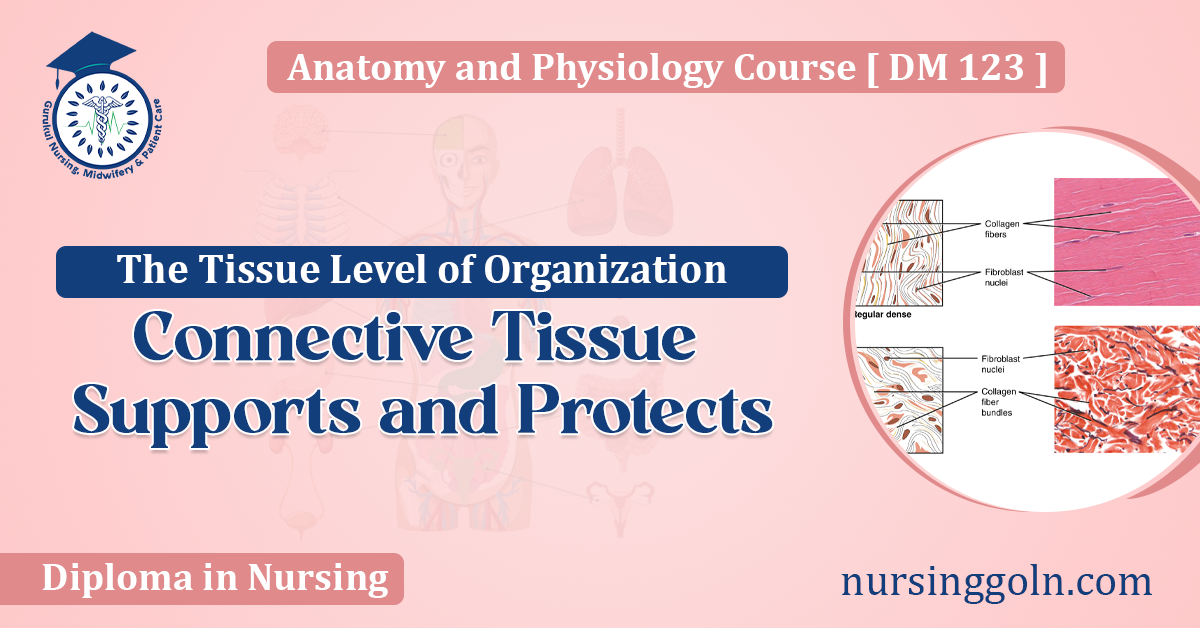Human anatomy is an intricate and fascinating subject. At the foundational level, our bodies are composed of cells, which group together to form tissues. Among these tissues, one stands out for its versatility and wide range of functions: connective tissue. From bones and cartilage to blood and fat, connective tissues play crucial roles in supporting and protecting the body. This article aims to provide an in-depth look at connective tissues, highlighting their importance in the tissue level of organization.
Connective Tissue Supports and Protects: The Tissue Level of Organization
I. Introduction to Connective Tissue
Connective tissues, as the name implies, connect or bind other tissues in the body. They vary in density and function but primarily serve to support and protect. Unlike other primary tissues which are relatively homogeneous in nature, connective tissues consist of various cell types and extracellular components.
II. Components of Connective Tissue
The diversity and functionality of connective tissue arise from its three primary components:
- Cells: Different types of cells are found in connective tissue. Some of the main cell types include fibroblasts (cells producing fibers and ground substance), chondrocytes (cells of cartilage), osteocytes (bone cells), and adipocytes (fat cells).
- Fibers: Fibers provide strength and flexibility to connective tissues. There are three main types:
- Collagen fibers: These are tough, flexible, and resistant to stretching. They are abundant in tendons and ligaments.
- Elastic fibers: Composed of elastin, these fibers allow tissues to stretch and return to their original shape. They are predominant in areas like the skin and lungs.
- Reticular fibers: Thin and branched, reticular fibers form delicate networks supporting soft tissue organs like the spleen and lymph nodes.
- Ground Substance: This is a non-cellular material that surrounds the cells and fibers. Depending on the tissue type, it can range from fluid to semi-fluid to solid. It comprises water, salts, and complex carbohydrates.
III. Classification of Connective Tissue
Connective tissues are categorized based on their structure and function. Here are the main types:
- Loose Connective Tissue
- Areolar tissue: Found beneath the skin and between organs, this tissue contains all three fiber types and serves to cushion and support.
- Adipose tissue: Comprising fat cells, adipose tissue insulates the body, stores energy, and cushions organs.
- Reticular tissue: This supports the internal framework of organs like the liver, spleen, and lymph nodes.
- Dense Connective Tissue
- Dense regular: Characterized by parallel collagen fibers, it forms tendons (connecting muscles to bones) and ligaments (connecting bones to bones).
- Dense irregular: Found in the dermis of the skin and organ capsules, it provides strength in multiple directions due to its randomly arranged collagen fibers.
- Elastic connective tissue: Found in the walls of arteries, it allows expansion and contraction.
- Cartilage
- Hyaline cartilage: Provides support with flexibility and resilience. Found in the nose, trachea, and ends of long bones.
- Elastic cartilage: Contains more elastin fibers, offering more flexibility. Found in the ear and epiglottis.
- Fibrocartilage: Tough and shock-absorbing, it’s found in areas like the intervertebral discs.
- Bone (osseous tissue): Protects and supports the body, facilitating movement. Also stores minerals and fat and produces blood cells.
- Blood: A fluid tissue, blood transports nutrients, gases, and wastes throughout the body.
IV. Functions of Connective Tissue
- Support: Connective tissues provide a structural framework. Bones offer a sturdy support system, while cartilage provides flexible support.
- Protection: Bones safeguard vital organs such as the brain and heart. Adipose tissue cushions and shields organs from mechanical injuries.
- Storage: Bones act as reservoirs for minerals like calcium and phosphate. Adipose tissue stores energy in the form of fat.
- Transport: Blood, being a connective tissue, transports nutrients, hormones, gases, and waste products throughout the body.
- Repair: Fibroblasts produce fibers and ground substance essential for tissue repair after injury.
V. Connective Tissues: Significance in Disease and Healing
Connective tissues, due to their widespread presence and crucial functions, are often involved in a variety of medical conditions. For instance, osteoporosis affects bone tissue, leading to decreased density and increased fracture risk. Rheumatoid arthritis and osteoarthritis affect the joints, involving both bone and cartilage.
Furthermore, the healing capacity of connective tissues is notable. For instance, after a bone fracture, the body initiates a repair process involving various stages, from inflammation to bone remodeling. Fibroblasts play a pivotal role in wound healing by producing collagen, which forms the scar tissue.
VI. Conclusion
Connective tissues, with their diverse components and types, are instrumental in the tissue level of organization. Their roles in support, protection, storage, transport, and repair underscore their significance in maintaining bodily integrity and function. A deeper understanding of these tissues is essential, not just for appreciating human anatomy but also for advancements in medical science and treatments. Whether it’s the robustness of bones, the flexibility of cartilage, or the transporting ability of blood, connective tissues indeed support and protect in myriad ways.
